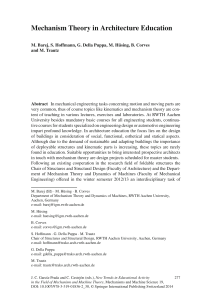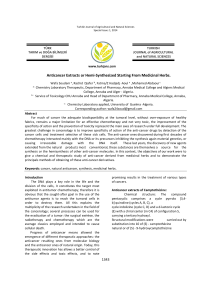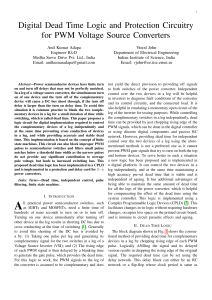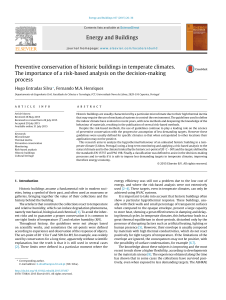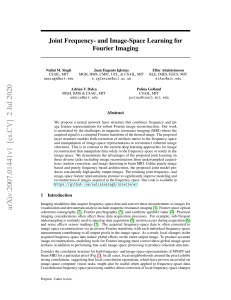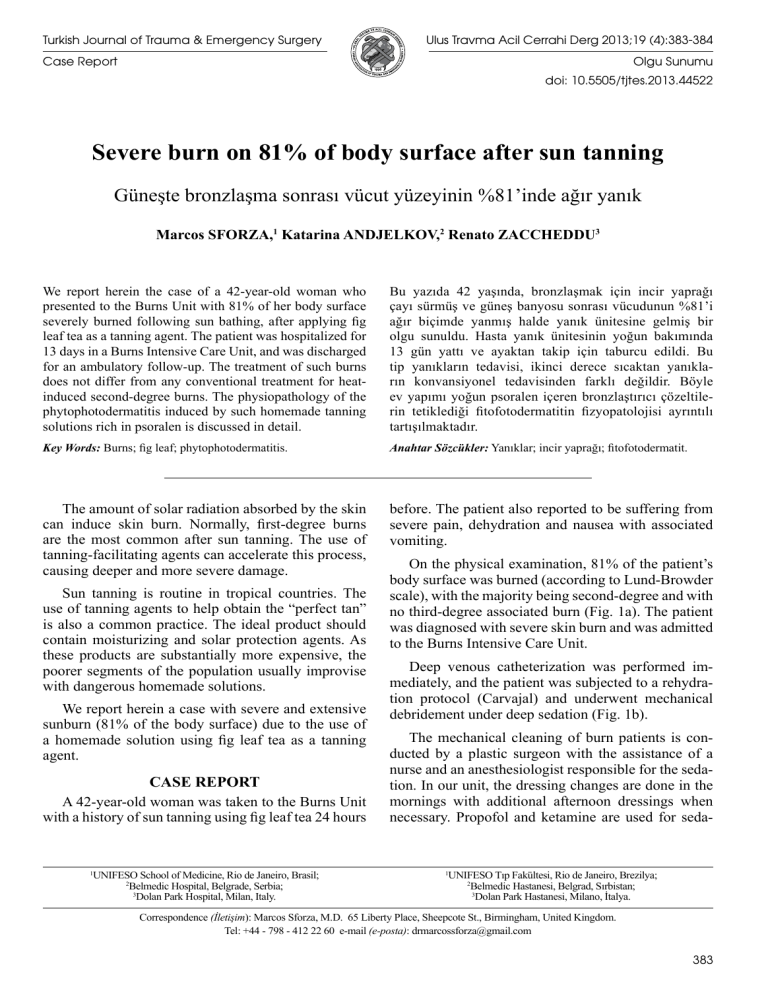
Turkish Journal of Trauma & Emergency Surgery
Ulus Travma Acil Cerrahi Derg 2013;19 (4):383-384
Case Report
Olgu Sunumu
doi: 10.5505/tjtes.2013.44522
Severe burn on 81% of body surface after sun tanning
Güneşte bronzlaşma sonrası vücut yüzeyinin %81’inde ağır yanık
Marcos SFORZA,1 Katarina ANDJELKOV,2 Renato ZACCHEDDU3
We report herein the case of a 42-year-old woman who
presented to the Burns Unit with 81% of her body surface
severely burned following sun bathing, after applying fig
leaf tea as a tanning agent. The patient was hospitalized for
13 days in a Burns Intensive Care Unit, and was discharged
for an ambulatory follow-up. The treatment of such burns
does not differ from any conventional treatment for heatinduced second-degree burns. The physiopathology of the
phytophotodermatitis induced by such homemade tanning
solutions rich in psoralen is discussed in detail.
Bu yazıda 42 yaşında, bronzlaşmak için incir yaprağı
çayı sürmüş ve güneş banyosu sonrası vücudunun %81’i
ağır biçimde yanmış halde yanık ünitesine gelmiş bir
olgu sunuldu. Hasta yanık ünitesinin yoğun bakımında
13 gün yattı ve ayaktan takip için taburcu edildi. Bu
tip yanıkların tedavisi, ikinci derece sıcaktan yanıkların konvansiyonel tedavisinden farklı değildir. Böyle
ev yapımı yoğun psoralen içeren bronzlaştırıcı çözeltilerin tetiklediği fitofotodermatitin fizyopatolojisi ayrıntılı
tartışılmaktadır.
Key Words: Burns; fig leaf; phytophotodermatitis.
Anahtar Sözcükler: Yanıklar; incir yaprağı; fitofotodermatit.
The amount of solar radiation absorbed by the skin
can induce skin burn. Normally, first-degree burns
are the most common after sun tanning. The use of
tanning-facilitating agents can accelerate this process,
causing deeper and more severe damage.
before. The patient also reported to be suffering from
severe pain, dehydration and nausea with associated
vomiting.
Sun tanning is routine in tropical countries. The
use of tanning agents to help obtain the “perfect tan”
is also a common practice. The ideal product should
contain moisturizing and solar protection agents. As
these products are substantially more expensive, the
poorer segments of the population usually improvise
with dangerous homemade solutions.
We report herein a case with severe and extensive
sunburn (81% of the body surface) due to the use of
a homemade solution using fig leaf tea as a tanning
agent.
CASE REPORT
A 42-year-old woman was taken to the Burns Unit
with a history of sun tanning using fig leaf tea 24 hours
UNIFESO School of Medicine, Rio de Janeiro, Brasil;
2
Belmedic Hospital, Belgrade, Serbia;
3
Dolan Park Hospital, Milan, Italy.
1
On the physical examination, 81% of the patient’s
body surface was burned (according to Lund-Browder
scale), with the majority being second-degree and with
no third-degree associated burn (Fig. 1a). The patient
was diagnosed with severe skin burn and was admitted
to the Burns Intensive Care Unit.
Deep venous catheterization was performed immediately, and the patient was subjected to a rehydration protocol (Carvajal) and underwent mechanical
debridement under deep sedation (Fig. 1b).
The mechanical cleaning of burn patients is conducted by a plastic surgeon with the assistance of a
nurse and an anesthesiologist responsible for the sedation. In our unit, the dressing changes are done in the
mornings with additional afternoon dressings when
necessary. Propofol and ketamine are used for seda-
UNIFESO Tıp Fakültesi, Rio de Janeiro, Brezilya;
2
Belmedic Hastanesi, Belgrad, Sırbistan;
3
Dolan Park Hastanesi, Milano, İtalya.
1
Correspondence (İletişim): Marcos Sforza, M.D. 65 Liberty Place, Sheepcote St., Birmingham, United Kingdom.
Tel: +44 - 798 - 412 22 60 e-mail (e-posta): [email protected]
383
Ulus Travma Acil Cerrahi Derg
cal areas. The fig leaf (Ficus carica) is rich in psoralen, which is the active substance responsible for the
stronger and deeper tan effect.[3,4]
Psoralens intercalate in DNA, but do not establish
covalent bonds in absence of light. Under the effect
of light, the psoralens intercalated in DNA are activated, even in the absence of oxygen, and establish
intra- or inter-strand covalent bonds with bases, forming adducts. In the presence of oxygen, there is, in addition, formation of superoxide radicals that damage
DNA. By these two mechanisms, psoralens, under the
influence of light, inhibit replication and transcription.
They increase pigmentation by acting on melanocytes,
as a very strong photosensitizing agent.[5]
(a)
(b)
Fig. 1. (a) 81% of the patient’s body surface was burned, and
(b) underwent mechanical debridement under deep
sedation. (Color figures can be viewed in the online issue,
which is available at www.tjtes.org).
tion. Ketamine induces an effective hypnotic as well
as anesthetic effect, but demands an experienced anesthetist for its management.
The dressing procedures applied to this patient
were the same as with any other second-degree burn
injury caused by heat. This patient needed only morning dressing changes on a daily basis. The occlusive
dressings were made with 4-amino-N-(2-pyrimidinyl)
benzenesulfonamide silver salt cream (also known as
silver sulfadiazine or Dermazine®) for the first 7 days.
The silver sulfadiazine acts as an antiviral, antibactericidal and antifungal agent until the natural process
of re-epithelization begins. After the body was able to
reinstall its own natural barriers, the occlusive dressings were changed to Vaseline until she was released
from the Burns Unit. This patient did not require any
skin grafts and did not develop any skin infection during the process. The patient was hospitalized for 13
days and was discharged for complementary ambulatory follow-up when fully re-epithelized.
DISCUSSION
Various substances in third-world countries are
used for tanning by the poor population.[1] A mix of
the fig leaf’s tea with a mineral oil is a quite common
homemade tanning solution.[2] The fig tree is a bearer
tree of the Moraceae family, commonly found in tropi384
Fortunately, the burn injury caused by this agent
can be treated easily in any hospital as any burn inflicted by heat. The fig leaf does not lead to any specific
chemical burn per se. Moreover, it mainly precipitates
sunburn by allowing the sun radiation to promote a
severe phytophotodermatitis in over-photosensitized
skin. As illustrated in this unique case, the treatment
of this particular burn fortunately does not differ from
that of any severe heat-induced burn.
In Brazil, several hospitals reported more than 50
cases of fig leaf-induced burn, in one summer, exclusively in their areas. The easy access to the components and the almost zero cost make this a very attractive practice. There are no reports of death caused by
these burns thus far.[6] The official agencies in these
countries are already developing education campaigns
to try to alert the population to the risks of this practice. However, reports in the medical literature are increasing every year.
Conflict-of-interest issues regarding the authorship
or article: None declared.
REFERENCES
1. Piccolo-Lobo MS, Piccolo NS, Piccolo-Daher MT, Cardoso
VM. Sun tanning-related burns-a 3-year experience. Burns
1992;18:103-6.
2. Bollero D, Stella M, Rivolin A, Cassano P, Risso D, Vanzetti M. Fig leaf tanning lotion and sun-related burns: case
reports. Burns 2001;27:777-9.
3. Zaynoun ST, Aftimos BG, Abi Ali L, Tenekjian KK, Khalidi
U, Kurban AK. Ficus carica; isolation and quantification of the
photoactive components. Contact Dermatitis 1984;11:21-5.
4. Vaya J, Mahmood S. Flavonoid content in leaf extracts of the
fig (Ficus carica L.), carob (Ceratonia siliqua L.) and pistachio (Pistacia lentiscus L.). Biofactors 2006;28:169-75.
5. Polat M, Oztas P, Dikilitas MC, Alli N. Phytophotodermatitis
due to Ficus carica. Dermatol Online J 2008;14:9.
6. Micali G, Nasca MR, Musumeci ML. Severe phototoxic reaction secondary to the application of a fig leaves’ decoction
used as a tanning agent. Contact Dermatitis 1995;33:212-3.
7. Ozdamar E, Ozbek S, Akin S. An unusual cause of burn injury: fig leaf decoction used as a remedy for a dermatitis of
unknown etiology. J Burn Care Rehabil 2003;24:229-33.
Temmuz - July 2013

